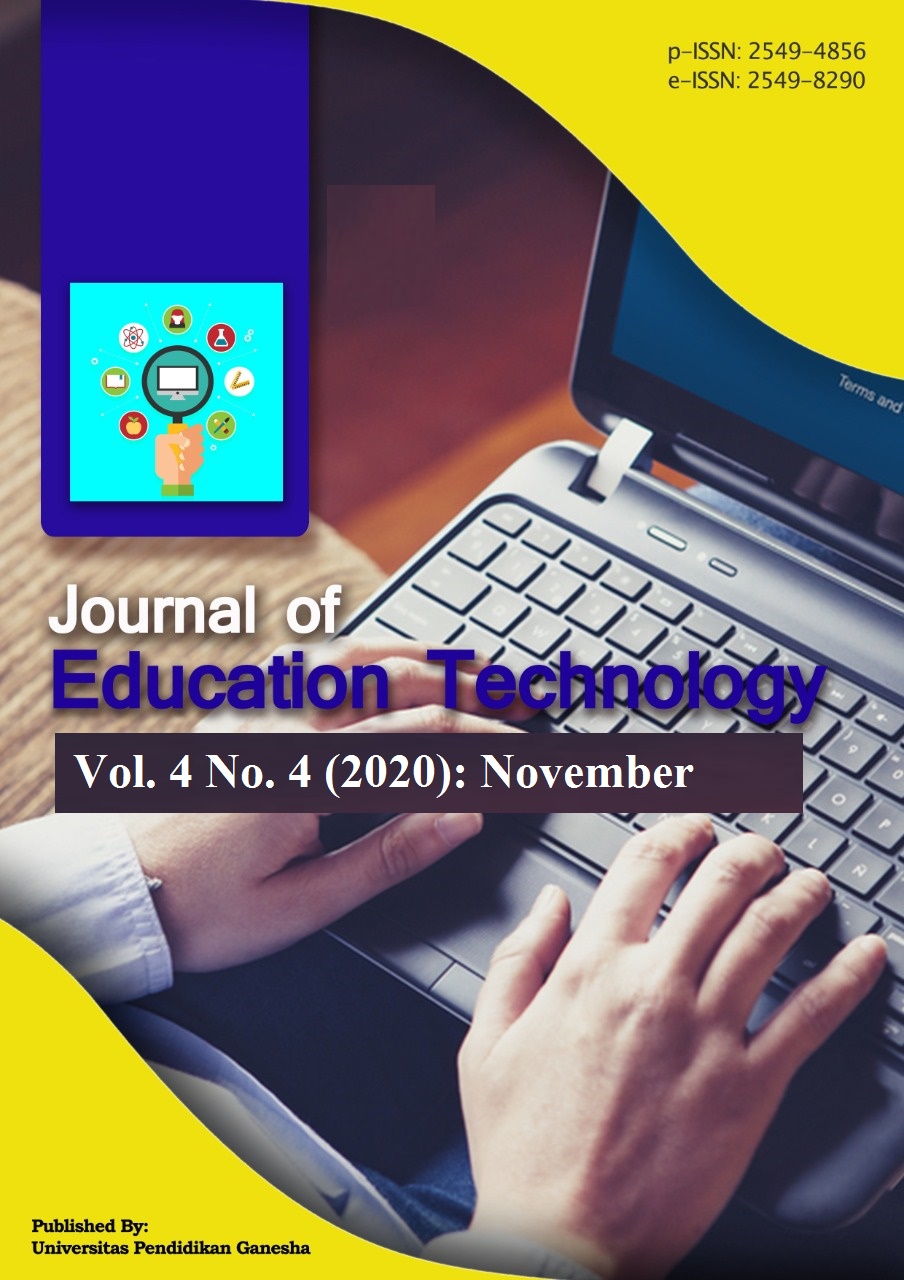Development of Comic Mathematics Teaching Materials on Flat-Building Material to Increase Reading Interest in Class IV Elementary School Students
DOI:
https://doi.org/10.23887/jet.v4i4.30034Keywords:
Pengembangan Bahan Ajar, Minat MembacaAbstract
The problem of the student’s low reading interest is the variety of learning media in delivering material. The lack of reading interest that students have about books provided by schools is less attractive. Research aims to develop the raw materials of comics in flat waking materials to increase interest in reading elementary school students. Research and development carried out are four steps, namely: definition, design, development, and propagation. The analysis process collects qualitative and quantitative data from materials experts, design experts, the specific educators in math subjects, and class iv student participants using the likert scale. Based on the validity of expert media and material experts obtained from a first validity test with an 83.3% rating categorized perfectly worthy of use, a second validity test with an average of 90% is categorized perfectly worthy of use and an 80% is categorized asa learning medium. The development of comics for mathematical materials in flat waking materials to increase interest in reading the fourth graders is worth using and can serve asa guide in learning.References
Abdullah, R. (2017). pengaruh penerapan model pembelajaran kooperatif tipe jigsaw pada mata pelajaran kimia di madrasah aliyah. lantanida journal, 5(1), 18.
Afnida, M. F. (2016). Penggunaan Buku Cerita Bergambar dalam Pengembangan Bahasa Anak. Jurnal Ilmiah Pendidikan Anak Usia Dini, 53-54.
Aji W., S. B. (2019). UPAYA MENINGKATKAN HASIL BELAJAR DAN KETERAMPILAN PROSES SISWA MELALUI MODEL PEMBELAJARAN PROBLEM BASED LEARNING DI KELAS IV SD N TINGKIR TENGAH 02. Jurnal Basicedu, 3(1), 47-52.
Arsyad, A. (2013). Media Pembelajaran. Jakarta: PT. Rajagrafindo Persada.
Asrul, A. (2020). Pembelajaran Inovatif pada Pendidikan Dasar. Jurnal Bunaya, 137-150.
Dewi, N. P. (2020). Efektifivitas Pembelajaran Matematika melalui Pendekatan PMRI terhadap Kompetensi Pengetahuan Matematika. Jurnal Penelitian & Pengembangan Pendidikan, 4(2), 204-214.
Hamdani. (2011). Srategi Belajar Mengajar . Bandung: Pustaka Setia.
Hasbullah. (2014). Media Pembelajaran Matematika. Jakarta: Savitra Collage.
Mulyatiningsih, E. (2014). Metode Penelitian Terapan Bidang Pendidikan. Bandung: Alfabeta.
Ramadanti, E. C. (2020). Integrasi Nilai-nilai Islam dalam Pembelajaran IPA. Jurnal Tawadhu, 4(1), 1053-1062.
Rohani. (2019). Media Pembelajaran. Medan: Universitas Islam Negeri Sumatera Utara.
Sabrina, M. F. (2017). Faktor-Faktor Penyebab Rendahnya Motivasi Belajar Siswa Dalam Proses Pembelajaran Matematika Di Kelas V Sd Negeri Garot Geuceu Aceh Besar. Jurnal Ilmiah Pendidikan Guru Sekolah Dasar, FKIP Unsyiah, 2 (4), 108-118.
Septy, L. (2015). Pengembangan Media Komik Pada Materi Peluang Kelas VIII. Jurnal Dedaktik Matematika. 2 (2), 16-26.
Slameto. (2013). Belajar dan Faktor-Faktor yang Mempengaruhinya. Jakarta: Rineka Cipta.
Sugiyono. (2010). Metode Penelitian Kuantitatif, Kualitatid, dan R&D. Bandung: Alfabeta.
Sukmadinata. (2016). Metode Penelitian Pendidikan. Bandung: Rosdakarya.
Sulfemi, &. W. (2019). Manajemen Pendidikan Berbasis Multi Budaya. Bogor: STKIP Muhammadiyah.
Tarigan, H. G. (2011). Membaca dala Kehidupan. Bandung: Angkasa.
Yuliana, N. D. (2015). Pengaruh Penggunaan Media Konkret terhadap Hasil Belajar Siswa pada Mata Pelajaran Matematika Kelas II Sekolah Dasar Negeri Babelan Kota 06 Kecamatan Babelan Kabupaten Bekasi. Jurnal Pendidikan Sekolah Dasar, 3(1), 34-40.
Downloads
Published
How to Cite
Issue
Section
License
Authors who publish with the Journal of Education Technology agree to the following terms:
- Authors retain copyright and grant the journal the right of first publication with the work simultaneously licensed under a Creative Commons Attribution License (CC BY-SA 4.0) that allows others to share the work with an acknowledgment of the work's authorship and initial publication in this journal.
- Authors are able to enter into separate, additional contractual arrangements for the non-exclusive distribution of the journal's published version of the work (e.g., post it to an institutional repository or publish it in a book), with an acknowledgment of its initial publication in this journal.
- Authors are permitted and encouraged to post their work online (e.g., in institutional repositories or on their website) prior to and during the submission process, as it can lead to productive exchanges, as well as earlier and greater citation of published work. (See The Effect of Open Access)
















